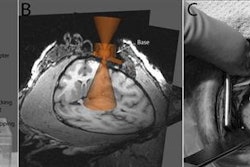Their study included 28 patients with local advanced cervical cancer who underwent an MRI scan prior to chemotherapy. Texture analysis parameters were quantified using a commercial research software algorithm, and a surgical specimen served as the gold standard to assess texture analysis efficacy.
In one key finding, the researchers were able to differentiate between adenocarcinomas and squamocellular carcinomas with a sensitivity of 100% and a specificity of 81% by using a cutoff value of 29 or greater with the mean texture analysis parameter.
"Even if it is a preliminary study on a small population, MR texture analysis in cervical tumors has demonstrated in our study a strong potential for differentiating the two main histological subtypes of cervical cancer and to predict response to neoadjuvant treatment," study presenter Dr. Maria Ciolina, from Sapienza University of Rome, told AuntMinnie.com. "In that way, MR texture analysis might be a useful tool in the assessment of tumor aggressiveness and in the definition of patient prognosis, especially when data from randomly sampled histological specimens are limited and insufficient to evaluate the prognosis."
The finding of a correlation between texture parameters and response to therapy might be useful for predicting response to neoadjuvant chemotherapy, with the future aim of obtaining a more personalized therapy protocol.
"The identification of texture features of cervical tumors associated with a good or poor prognosis combined with conventional MR imaging measurements of tumor volume and staging might influence decisions on the type of neoadjuvant therapy and surgical planning, permitting a more personalized approach to avoid toxicity and morbidity in connection with overtreatment," Ciolina said.



















